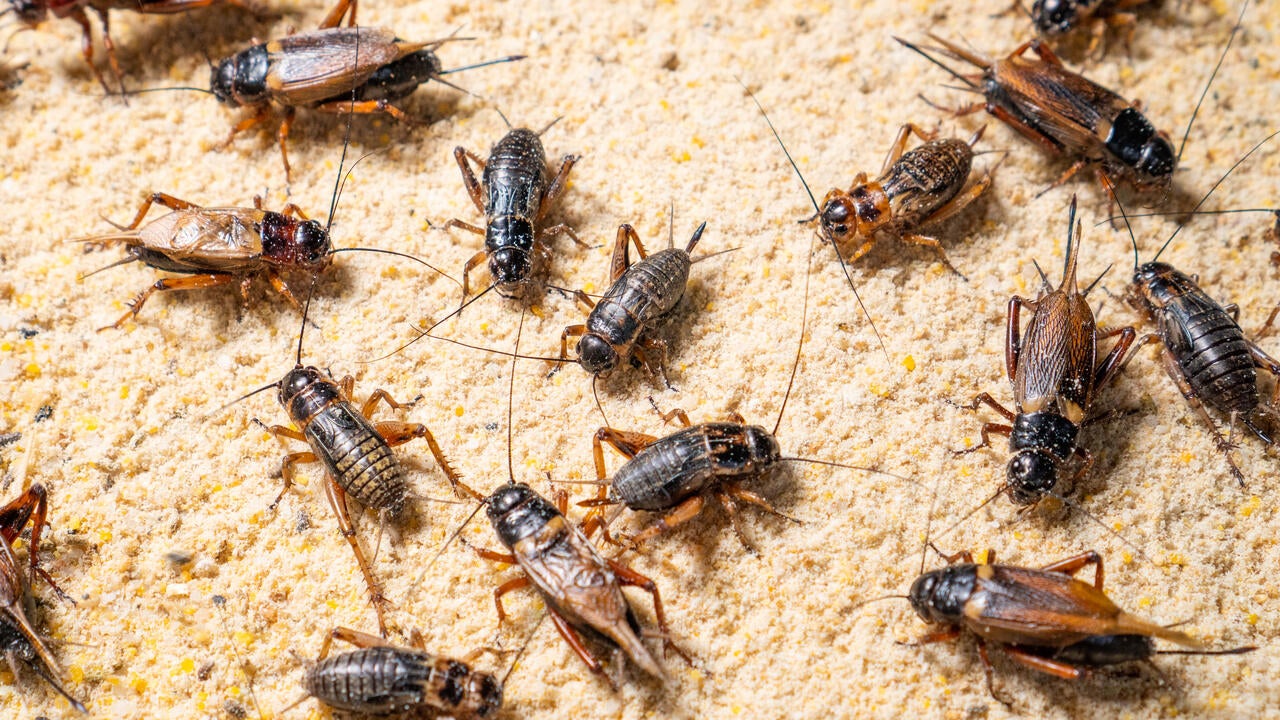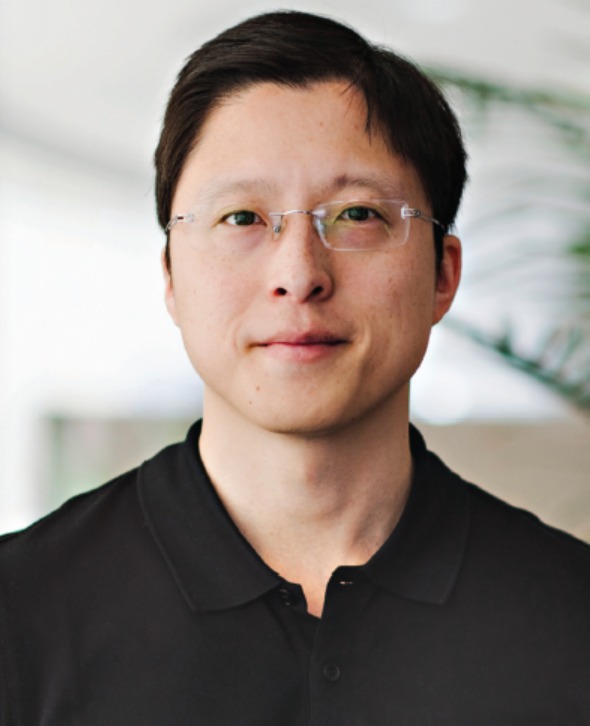
'Visionary project' farms crickets for food
Waterloo Engineering spinoff recognized by United Nations for sustainable AI innovation

Waterloo Engineering spinoff recognized by United Nations for sustainable AI innovation
By Brian Caldwell Faculty of EngineeringA company that was founded by two Waterloo Engineering professors and several alumni has been recognized by an agency of the United Nations (UN) for its contributions to a state-of-the-art facility to farm crickets as a source of protein.
DarwinAI and the Aspire Food Group, which is leading the initiative, were named to a list of the top 10 projects using artificial intelligence (AI) to advance the UN’s sustainability goals.
"It’s been inspiring to work on such a visionary project that brings artificial intelligence into tangible, meaningful reality, given the increasing global demand for sustainable solutions for food and material production,” says Alexander Wong (BASc ’05, computer engineering, MASc ’07, electrical and computer engineering, PhD ’10, systems design engineering), a systems design engineering professor who is leading the development of AI algorithms for the facility.
computer engineering, PhD ’10, systems design engineering), a systems design engineering professor who is leading the development of AI algorithms for the facility.
“The hope is to work with DarwinAI to scale this solution with Aspire Food Group as the number of automated production facilities grows around the world.”
Alumnus Alexander Wong is a systems design engineering professor and co-founder of DarwinAI.
Aspire is working with several industry partners, including Waterloo-based DarwinAI, on a facility in London, Ontario expected to be the largest fully automated cricket production and processing operation in the world.
DarwinAI is contributing automated visual inspection and explainable AI with Internet of Things (IoT) sensor data analysis to optimize yield and provide insight into plant conditions and operations.
The facility is expected to open later this year. Aspire aims to deploy the pioneering modular production system around the world.
“A growing population and increasing demand for food and material require sustainable, scalable solutions,” says Mohammed Ashour, the CEO Aspire.
The DarwinAI/Aspire project is one of only two from North America to make the top 10 after the International Research Center in Artificial Intelligence (IRCAI), which operates under the auspices of the United Nations Education, Scientific and Cultural Organization (UNESCO), issued a call last year for solutions with global relevance.
The other North American project to receive recognition was submitted by the National Aeronautics and Space Administration (NASA).
“This important distinction speaks to the breath of Aspire's vision and the transformative potential of artificial intelligence, and it is a privilege to apply our technology to such a forward-looking initiative,” says Sheldon Fernandez (BASc ’01, computer engineering), the CEO of DarwinAI.
The top 10 projects are expected to be highlighted by the IRACI at a press conference in New York in February.
DarwinAI was founded by Wong, Fernandez, research professor Javad Shafiee (PhD ’17, systems design engineering), Arif Virani (BASc ’05, computer engineering), Francis Li (BASC ’14, electrical engineering, MASc ’16, computer vision) and Brendan Chwyl (BASc ’14, mechatronics engineering, MASc ’16 systems design engineering).
The cricket facility is backed by $16.8 million in funding from Next Generation Manufacturing Canada (NGen), which is financed through the Canadian government’s supercluster initiative.

Read more
Engineering researchers team up to tackle the plastics pollution problem with microbial innovation and engineering design

Read more
15 University of Waterloo researchers have been named to the annual Highly Cited Researchers™ list for significant contributions to their specific fields of research

University of Waterloo Engineering master's student Liam Salass developed an AI-based system that improved puck detection when analyzing game video. (University of Waterloo)
Read more
University of Waterloo researchers make big strides in hockey analysis using game video
The University of Waterloo acknowledges that much of our work takes place on the traditional territory of the Neutral, Anishinaabeg, and Haudenosaunee peoples. Our main campus is situated on the Haldimand Tract, the land granted to the Six Nations that includes six miles on each side of the Grand River. Our active work toward reconciliation takes place across our campuses through research, learning, teaching, and community building, and is co-ordinated within the Office of Indigenous Relations.